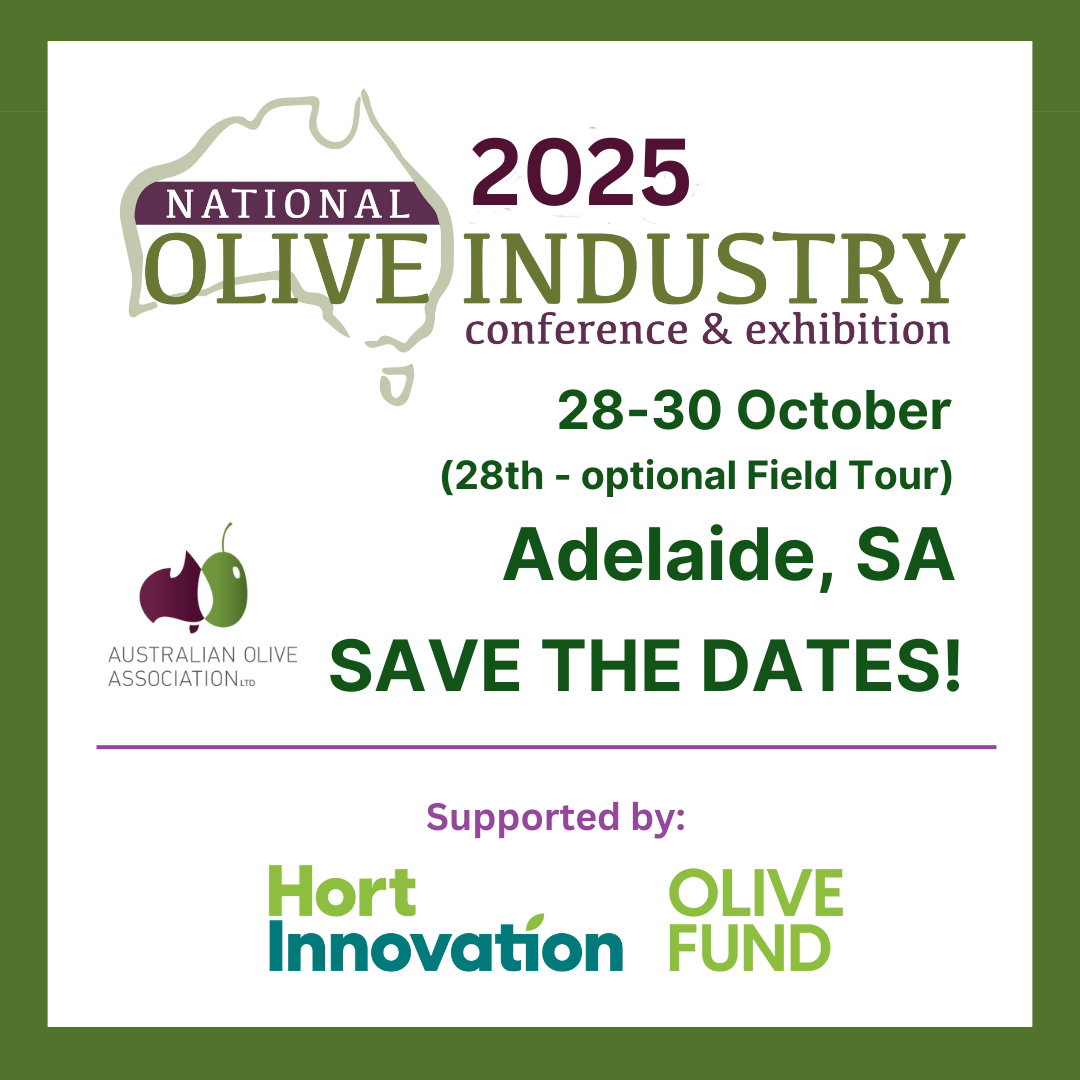Olive leaf, flower and fruit samples are wanted for a three year research project into pest and disease management being conducted by the University of Western Sydney.
The project, which began during the flowering period in the 2006-07 season, is investigating olive fruit diseases and disorders, and the safe use of fungicides to manage berry rot diseases for sustainable olive culture.
The research team is made up of Associate Professor Robert Spooner-Hart, Dr. Vera Sergeeva, Oleg Nicetic, and Associate Professor Tan Nair and the project is supported with a financial grant from Horticulture Australia Ltd.
The olive industry does not at present have any registered fungicides except copper for use in disease management, yet it is often not realised that fungal pathogens can taint olive oil. For instance, more than 30% infection of olive berries by anthracnose (Colletotrichum gloeosporioides) has been shown to result in increased free acidity and peroxide numbers in the oil. Such oil could not be considered extra virgin.
Anthracnose, caused by Colletotrichum gloeosporiodes and C.accutatum, is a widespread olive disease occurring in most of the major olivegrowing countries of the world. It causes a soft rot on olive fruits. Under favourable conditions it produces orange slimy masses of spores on the fruit.
Berry rots
Symptoms of Colletotrichum appear on berries normally during ripening. Infected berries show soft, brown tissues on the shoulder part and are covered with concentric rings of massive amounts of orange spores. Some berries are completely covered with the sporlating (reproducing spores) fungus. Infected berries are shed and they cover the ground around the tree.
The work researchers believe needs to be done on anthracnose of olives includes:
• the study of the two Colletotrichum species
• the source of inoculums
• pathogenicity of Colletotrichum on different varieties
• the timing of infection
• testing chemical effectiveness and viability
• timing and fungicide application.
Field monitoring
Field monitoring of pests and diseases will be continued, especially in relation to flower infection. This is to check for latent infection by the fungi isolated.
How and where to send your samples
Researchers say the success of the project will be greatly enhanced by the participation of olivegrowers. The growers can assist by sending samples of flowers and leaves during the flowering season and berries and leaves during the remainder of the season ending at harvest. Samples showing any type of symptoms can be sent regularly on a fortnightly basis. They should be packed in paper bags after wrapping the flowers, berries and leaves separately. They can be posted during the early part of the week to avoid weekend storage in transit. The samples heed to be labelled including the name of olive variety, stage of olive growth, date of collection and locality.
The mailing address is Dr Vera Sergeeva, Centre for Food and Plant Science, University of Western Sydney, Locked Bag 1797, South Penrith DC, NSW 1797. The contact details for Dr Sergeeva are: Mobile: 0425 377 384, Fax: (02) 4570 1314, and email: v.sergeeva@uws.edu.au



